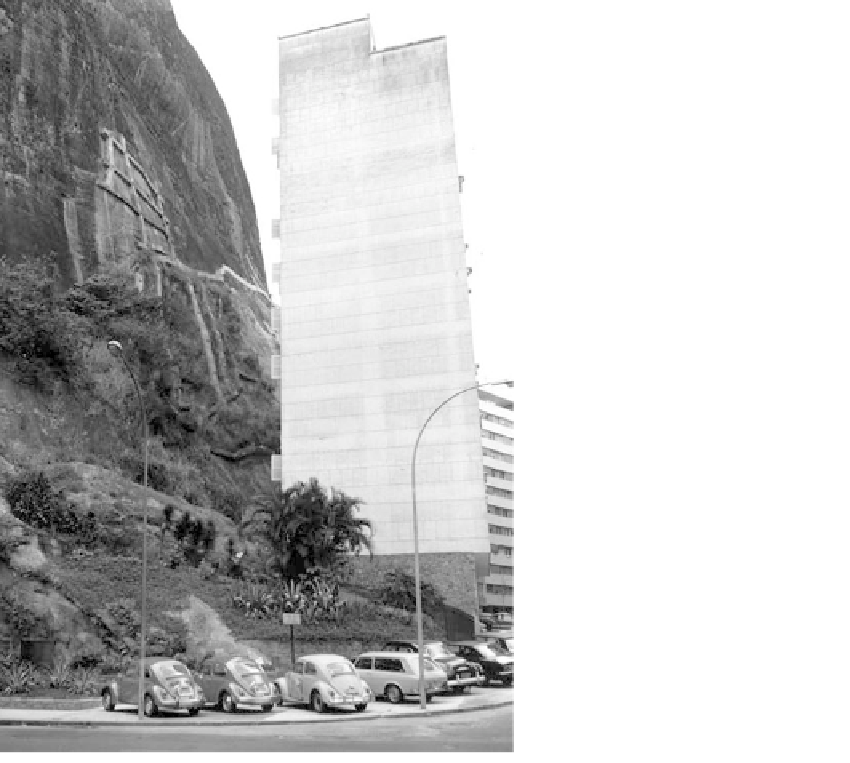Environmental Engineering Reference
In-Depth Information
FIGURE 9.115
Stabilization of exfoliating granite with
rock bolts and concrete straps (Rio de
Janeiro).
force of the jet compacts the mortar in place, bonding it to the rock, which first must be
cleaned of loose particles and loose blocks. Application is in 8 to 20 cm (3 to 4 in.) layers,
each of which is permitted to set before application of subsequent layers. Originally, weep
holes were installed to relieve seepage pressures behind the face, but modern installations
include geocomposite drainage strips placed behind the shotcrete. Since shotcrete acts as
reinforcing and not as support, it is used often in conjunction with rock bolts. The tensile
strength can be increased significantly by adding 25-mm-long wire fibers to the concrete
mix. A typical installation is illustrated in
Figure 9.124.
Soil Layer over Rock Slopes
As shown in
Figure 9.50,
cuts in mountainous terrain are inherently unstable where a rel-
atively thin layer of soil overlies rock. The upper portion of the underlying rock normally
is fractured and a conduit for seepage. Investigations made during the dry season may not
encounter seepage in the rock, but flow during the wet season often is common and must
be considered during evaluations.
Some typical solutions are given in
Figure 9.122.
In (a), design provides for inclining the
cut in the rock and the soil; in (b), the soil is cut to a stable inclination and the rock cut
made steeper by retention with shotcrete and rock nails; and in (c), the soil is retained with
a top down wall (
Figure 9.123)
and the rock with shotcrete and nails
(Figure 9.124).


